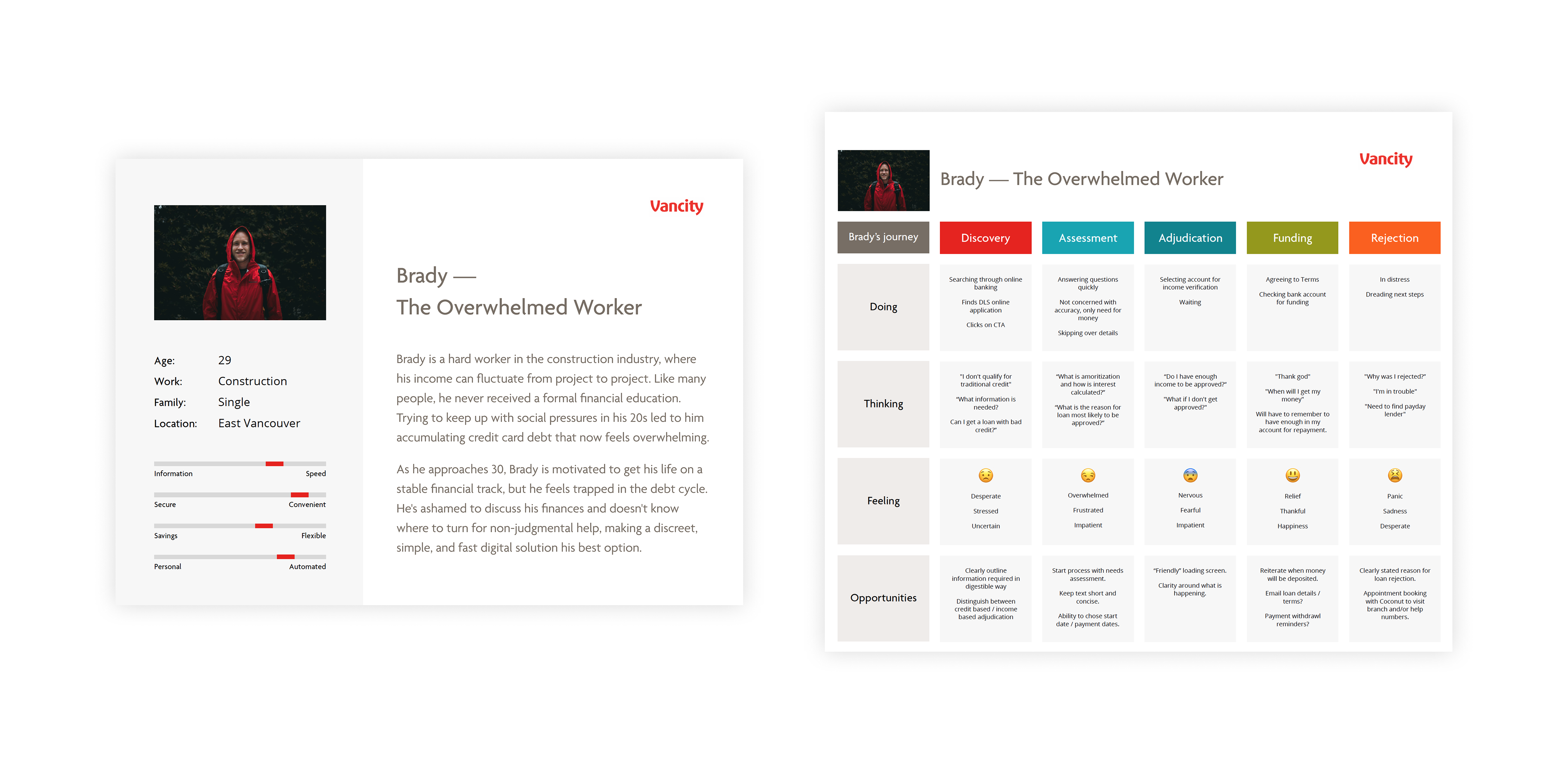To launch a compliant and user-friendly platform, I established a process rooted in agile UX practices and scalable systems.
Accelerated & Agile Workflow
Working with Vancity's first agile team, I established a design-dev workflow that kept the design phase one sprint ahead of engineering. This proactive approach ensured seamless handoffs, allowed for rapid iteration, and was key to our accelerated delivery.
Simplifying Complex Compliance
A major challenge was navigating the strict legal mandates of the financial industry. I worked as a partner with the Legal and Compliance teams to translate these complex requirements into intuitive, user-friendly flows that felt simple and supportive for the member.
Scaling for the Future
To ensure Vancity could build on this project's success, I worked with a teammate to create a flexible and scalable design system. This component library and set of guidelines were built to support not just the Fair & Fast Loan™, but all upcoming lending products, ensuring brand consistency and accelerating future development.
Ensuring a Successful Launch
Finally, I led a multi-faceted validation process to guarantee a successful launch. This included hands-on usability testing with members, a thorough design QA to ensure a polished final product, and presenting our work to secure C-suite approval.






